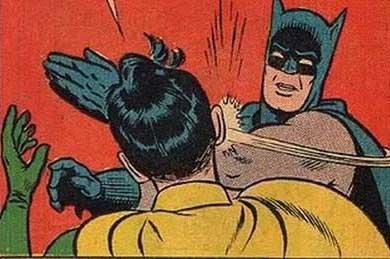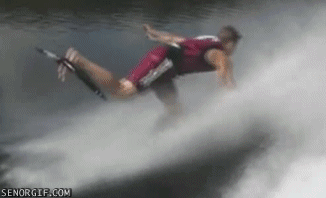1) “When an imparted load exceeds the load bearing capacity of the tissue accepting it, damage occurs. Neurological errors in movement execution commonly lead to loads being placed on “unprepared” tissues. It is therefore important to focus on two aspects of training to reduce the likelihood of sustaining injuries: 1. Working on improving neural control via progressively complex movement tasks – 2.Improve the physical, mechanical load bearing capacity of tissues.” – Andreo Spina
2) Some good PRI exercises in this article by CPG.
3) A story about a man amputating his own arm to try to get rid of his pain. It didn’t work. #PainScience
4) Avoid negativity, ignore trolls, stay open minded, and smile more. “Smiling leads to decrease in the stress-induced hormones that negatively affect your physical and mental health.”
5) Mike Robertson has a great post on the importance of Force Absorption. “Lee Taft likes to use the term “load to explode.” If you can’t flex, adduct and internally rotate, you can’t effectively load your system.”
6) This is a great read from Sue Falsone. We often spend so much time bickering about today’s different approaches that we forget about our profession’s past. “There are no truly unique concepts at this point. Everything has its basis in history. What we are doing is refining, repackaging, recreating, and resurrecting concepts that have been around for more than a century, and using our modern knowledge and technological advancements to elevate these concepts to a new level.”
7) Here’s a nice quick article on 9 Things You Should Know About Pain.
8) Great post from Erson on Rapid vs. Slow Responders. Tons of clinical pearls in this one.
9) Having trouble with ankle dorsiflexion ROM? Following a 6 week proprioceptive neuromuscular facilitation stretching program, ankle dorsiflexion was increased and tendon stiffness decreased.
10) This is a great read from Cressey on mobility vs stability, squatting, olympic lifting shoes, and training vs. working out. I couldn’t agree more that we over-diagnose ankle restrictions. Elevating someone’s heels during the squat doesn’t just take out the ankle mobility problem. There’s much more going on. Assuming it’s an ankle restriction is one of most common blunders in movement therapy.
11) Another great way to feel awkward from the GMB guys – Crow Pose. “Hand balancing is a great, enjoyable way to improve your upper body strength, whole body coordination, and awareness.”
12) Blood Flow Restriction Training is being used for performance, but should we start using it for rehab too? Here are two evidence based articles on BFRT (1, 2).
13) “If sensitization of the central nervous system is in some part responsible for the persistent chronic pain complaints experienced by these patients, then treatment strategies should perhaps focus on trying to “desensitize” the central nervous system and improving endogenous pain modulation.” – Jessica Van Oosterwijck goes over pain education and it’s effect on descending facilitatory pathways (endogenous pain modulation)
14) The good, the bad, and the not so ugly Deep Squat – why it’s good, who should do it, who shouldn’t, and other important considerations.
15) Is this a visual representation of what happens with manual therapy?
16) Learn about Heart Rate Variability (HRV) – Here, Here, & Here
17) PRI has a truly integrative approach. I learned about this when I was in the Postural Restoration class and Michael Cantrell had me bite a pen on my left side, take a few good breaths, and then my R shoulder IR improved 40+ degrees. It’s the most “magic” I’ve ever experienced in this field. Lance Goyke shows you an entry point into the rabbit hole in this article on feet and teeth.
18) Crawling seems to be popular these days. And for good reason, but don’t forget about the Turkish Get-Ups. The benefits of each exercise are described in this article.
19) When Gray Cook talks, I listen. “Strength is the single best way to hit ‘save’ on a good movement document.”
20) Chris Johnson shows you how to take your single leg work up a notch. Adding a barbell increases the stability/motor control demands, especially in the frontal plane (think see-saw and the fulcrum is your leg). Try adding these for advanced patients – Barbell Marching, Barbell Step-Up.
21) Stumbled upon the top 5 things Anthony Donskov learned in 2013: more specific adaptation, hypothalamus regulator, fatigue is more than muscles getting tired, best course/books, & pulse.
22) Sometimes Short Foot exercises and dissociative foot intrinsic exercises can be too cerebral for some patients. When this is the case, I go to Vele’s Lean. It’s simply placing the foot in a neutral state, then loading it to activate the muscles in the correct position.
23) Great TEDtalk – Kelly McGonigal: How to Make Stress Your Friend – “We know for certain, is that chasing meaning is better for your health than trying to avoid discomfort.”
24) Quick Book Review: The Polyvagal Theory by Stephen Porges.
Pro’s: Gives you a better understanding of the Autonomic Nervous System and how the body progressively responds to stress; 1) Remove Myelinated Vagal (NA) Break 2) Activate Sympathetic Nervous System 3) Activate Reptilian Unmyelinated Vagal Nerve (DN).
Cons: More educational than clinical; doesn’t offer many interventions. The book is very redundant. I felt like the book could have been half as long.
25) One of the biggest faults I see with the overhead press is loss of core stability and hyperextension of the spine. Brandon Hetzler writes a great article on how to avoid this compensation and improve your press. “Pressing from a standing plank is the ideal press posture, but how does one transfer a plank to a pressing, standing plank? My solution — the Press Plank.”
26) NOI Neuroscience Nugget – “Your muscles are dry.” A great metaphor to improve patient communication.
27) People You Should Know – James Cyriax is considered the father of orthopedic medicine. He was among the first to realize that imaging wasn’t enough for a diagnosis and surgery wasn’t always the best intervention. So he developed an assessment to identify soft tissue lesions using passive and active movements; and he developed non-surgical intervention techniques that resolve the findings from the assessment.
28) Top 3 Tweets of the Month
-
Robert Butler PT PhD @rjbutler_dptphd – agreeing on standards and language will move us light years forward…
-
Jon Herting @JonHerting – #1 thing to think about in performance training & rehab. Position affects function.
-
Charlie Weingroff @CWagon75 – The result of your work is the evidence.
29) Another way to score a 3 on the FMS Trunk Stability Push-Up




